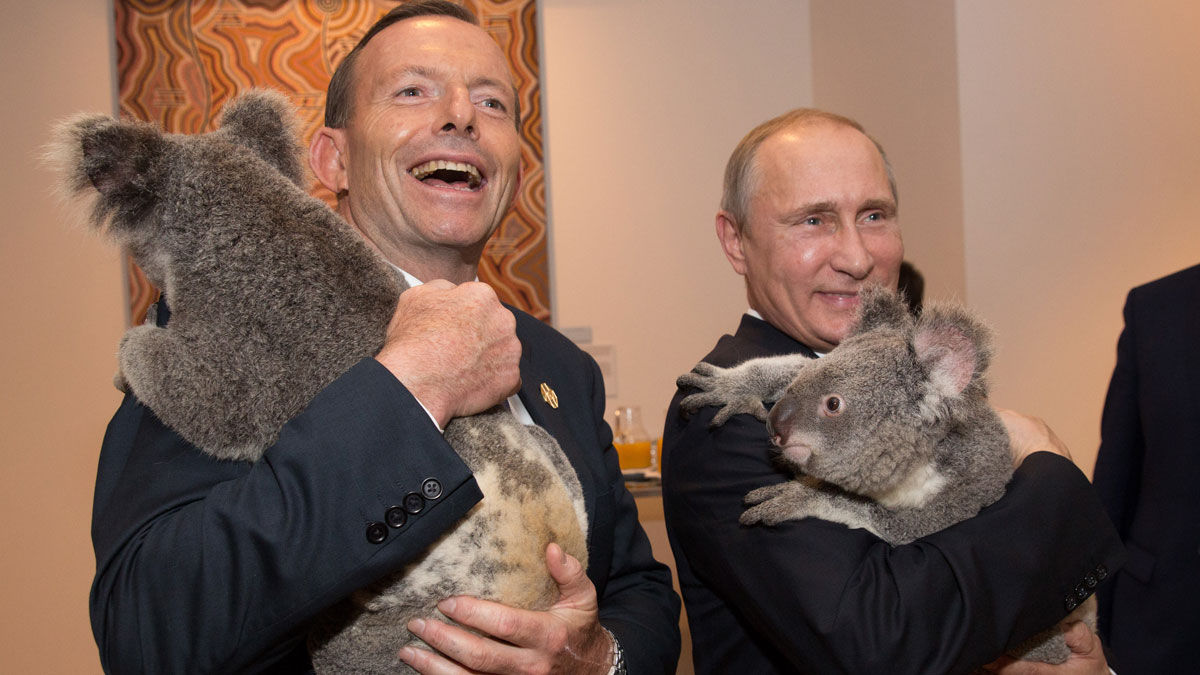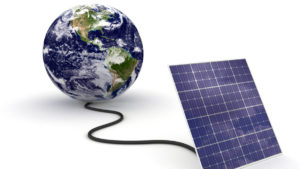Emission Control: Australia stands with Russia as one of the only developed countries without fuel efficiency standards

'I hear the bears here taste just as good as in our home country, Tony'. Pic: Getty Images
Emission Control is Stockhead’s fortnightly take on all the big news surrounding developments in renewable energy.
New analysis of 212 submissions to the government’s National Electric Vehicle Strategy has revealed 73 per cent of organisations “overwhelmingly” support the introduction of a fuel efficiency standard (FES) for light vehicles in Australia.
The FES is designed to regulate carbon dioxide emissions of new vehicles sold and the analysis – released by Greenpeace Australia on Thursday – found almost zero opposition to it.
According to the Australian Institute, a public policy think tank, the FES involves a fleet average efficiency target, where manufacturers pay a penalty for exceeding that target (based on the average of the new vehicles they sell).
The rules have been adopted by roughly 80 per cent of the global light vehicle market while Australia currently ranks alongside Russia as one of the only developed economies without them.
“Strong fuel efficiency standards – like those in New Zealand and Europe – lower the cost of transport for the average Australian and will increase the availability of electric vehicles,” Greenpeace Australia Pacific campaigner Joe Rafalowicz said.
“Transport is the third largest source of greenhouse gas emissions in Australia, and polluting, inefficient cars are running out of gas. A fuel efficiency standard can’t be parked any longer.”
If fuel efficiency standards had been introduced in 2016, the Australia Institute says $5.9bn in fuel costs would have been saved, 4,000 megalitres of imported fuel could have been avoided, and 9 million tonnes of CO2 would have been prevented (similar to a year’s worth of emissions from domestic aviation).
BHP trials renewable fuel at Yandi iron ore operations
The world’s biggest mining monster, BHP (ASX:BHP), is trialling the use of Hydrotreated Vegetable Oil (HVO) to help power mining equipment over an initial three-month period at its Yandi iron ore operations in Western Australia.
Energy major BP is set to supply the blended diesel, beginning with a 20 per cent HVO blend and increasing up to 50 per cent, for use in haul trucks, dozers, and other mining equipment.
BHP Western Australia Iron Ore (WAIO) asset president, Brandon Craig, said about 40 per cent of BHP’s operational greenhouse gas emissions come from using diesel fuel.
“This is a core focus of our decarbonisation strategy,” he explained.
“This collaboration with the teams at Yandi and BP is really exciting to see, given the potential application in our WAIO business and BHP’s operations globally.”
BHP has a medium-term target to reduce operational greenhouse gas emissions by at least 30 per cent by FY2030, from an FY2020 baseline.
Roughly 40 per cent of BHP’s operational emissions in its FY2020 baseline year came from diesel-powered equipment.
Here’s how ASX renewable energy stocks are tracking:
| CODE | COMPANY | PRICE | 1 WEEK RETURN % | 1 MONT RETURN % | 1 YEAR RETURN % | MARKET CAP |
|---|---|---|---|---|---|---|
| AVL | Aust Vanadium Ltd | 0.031 | -3% | 3% | 0% | $130,908,757 |
| BSX | Blackstone Ltd | 0.15 | 3% | -9% | -65% | $73,374,697 |
| DEL | Delorean Corporation | 0.064 | 16% | -16% | -71% | $13,590,418 |
| ECT | Env Clean Tech Ltd. | 0.01 | -9% | -9% | -52% | $24,766,106 |
| FMG | Fortescue Metals Grp | 22.83 | 4% | 1% | 18% | $70,477,506,973 |
| PV1 | Provaris Energy Ltd | 0.051 | -14% | -7% | -44% | $30,759,706 |
| GNX | Genex Power Ltd | 0.16 | 3% | 7% | -6% | $221,628,342 |
| HXG | Hexagon Energy | 0.016 | 0% | 0% | -67% | $8,719,570 |
| HZR | Hazer Group Limited | 0.57 | -3% | -5% | -37% | $95,448,496 |
| IFT | Infratil Limited | 8.05 | 2% | 0% | 10% | $5,683,271,119 |
| IRD | Iron Road Ltd | 0.105 | 5% | -13% | -43% | $84,360,818 |
| LIO | Lion Energy Limited | 0.035 | -3% | -3% | -30% | $14,913,858 |
| MEZ | Meridian Energy | 4.89 | -3% | -2% | 0% | $6,102,774,731 |
| MPR | Mpower Group Limited | 0.022 | 5% | 16% | -45% | $6,461,472 |
| NEW | NEW Energy Solar | 0.066 | 2% | 2% | 37% | $20,838,219 |
| PGY | Pilot Energy Ltd | 0.016 | -6% | 0% | -67% | $14,103,734 |
| PH2 | Pure Hydrogen Corp | 0.175 | -8% | -13% | -53% | $65,703,454 |
| PRL | Province Resources | 0.054 | -2% | -13% | -55% | $63,800,630 |
| PRM | Prominence Energy | 0.002 | 33% | 0% | -83% | $2,424,609 |
| QEM | QEM Limited | 0.19 | -7% | 0% | 19% | $25,677,278 |
| RFX | Redflow Limited | 0.185 | -5% | -21% | -53% | $32,349,485 |
| SKI | Spark Infrastructure | 0 | -100% | -100% | -100% | $5,036,718,784 |
| VUL | Vulcan Energy | 6.22 | 3% | -9% | -25% | $887,864,513 |
| CXL | Calix Limited | 5.67 | 12% | 11% | 11% | $984,500,921 |
| KPO | Kalina Power Limited | 0.014 | 0% | 8% | -22% | $21,212,741 |
| RNE | Renu Energy Ltd | 0.055 | 1% | -14% | -4% | $22,025,106 |
| NRZ | Neurizer Ltd | 0.078 | -7% | -16% | -44% | $90,814,634 |
| LIT | Lithium Australia | 0.041 | -7% | -15% | -64% | $50,068,859 |
| TVN | Tivan Limited | 0.086 | 9% | 0% | 39% | $123,569,222 |
| SRJ | SRJ Technologies | 0.12 | -23% | -8% | -72% | $9,809,278 |
| NMT | Neometals Ltd | 0.805 | -4% | -6% | -35% | $442,192,941 |
| MR1 | Montem Resources | 0.04 | 0% | 0% | -5% | $12,913,190 |
| FGR | First Graphene Ltd | 0.095 | -3% | -10% | -42% | $55,806,373 |
| EGR | Ecograf Limited | 0.22 | -4% | 5% | -61% | $96,821,694 |
| EDE | Eden Inv Ltd | 0.005 | 0% | -17% | -71% | $14,657,135 |
| CWY | Cleanaway Waste Ltd | 2.65 | -1% | -3% | -8% | $5,898,900,318 |
| CPV | Clearvue Technologie | 0.18 | -10% | -16% | -48% | $39,071,043 |
| CNQ | Clean Teq Water | 0.375 | -1% | -6% | -39% | $21,352,810 |
| M8S | M8 Sustainable | 0.009 | 0% | 13% | -45% | $4,418,176 |
| EOL | Energy One Limited | 4.11 | -7% | -8% | -37% | $124,238,633 |
| FHE | Frontier Energy Ltd | 0.44 | 1% | -9% | 238% | $109,102,883 |
| LPE | Locality Planning | 0.054 | 15% | 2% | -45% | $9,620,439 |
| GHY | Gold Hydrogen | 0.455 | -1% | -19% | 0% | $24,480,000 |
Other standout renewable energy news this week
Magnis Energy Technologies (ASX:MNS)
Elon Musk’s Tesla is looking to shore up raw materials supply in an increasingly tight market.
Its latest target is $430m capped graphite developer and emerging battery maker MNS, which has signed a deal to supply the carmaker with a minimum 17,500tpa active anode material (AAM).
AAM is a value-added graphite product used in batteries.
Tesla has given MNS a tight deadline, with supply to begin in February 2025.
“The agreement is conditional on Magnis securing a final location for its commercial AAM facility by 30 June 2023, producing AAM from a pilot plant by 31 March 2024, commencing production from the commercial AAM facility by 1 February 2025, and customer qualification,” the company says.
MNS is in the process of selecting a location in the US for its AAM facility.
Large scale pilot plant development for both AAM and Nachu graphite concentrate will then commence “immediately”.
Related Topics
UNLOCK INSIGHTS
Discover the untold stories of emerging ASX stocks.
Daily news and expert analysis, it's free to subscribe.
By proceeding, you confirm you understand that we handle personal information in accordance with our Privacy Policy.








